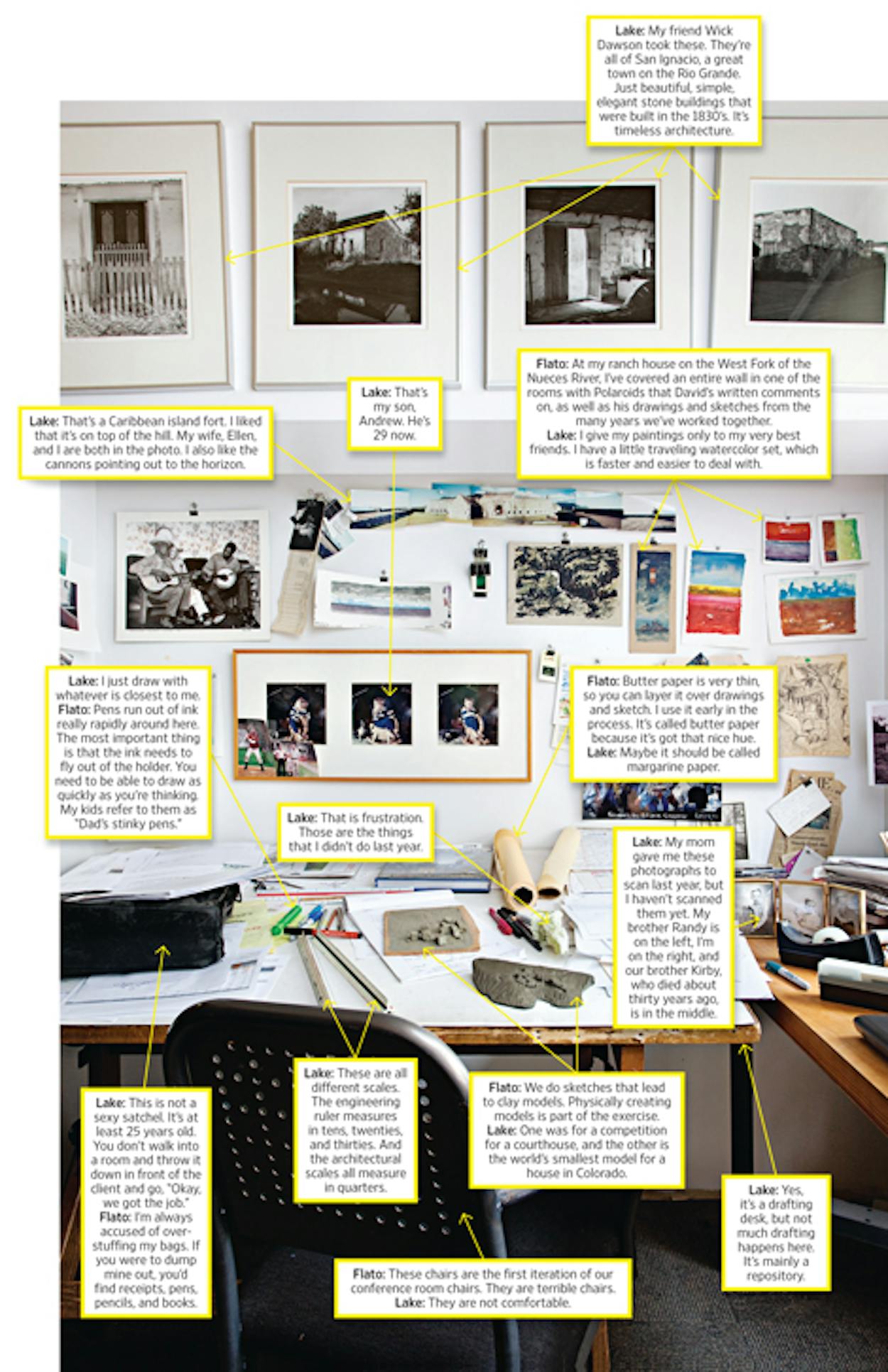Business partners and creative collaborators for almost thirty years, architects David Lake and Ted Flato have made a name for themselves in Texas and beyond with their sustainable modern designs and their seamless incorporation of nature into each project. Lake, 61, and Flato, 57, first met in San Antonio while working for legendary architect O’Neil Ford. Today, their namesake headquarters—a former car dealership around the corner from the Alamo—is home to fifty employees, who work in open spaces on three floors. And while both men have private offices (Lake’s is pictured here), they seldom use them. “Design doesn’t happen in there,” says Flato of his space. “The work happens as we go from table to table.” Lake concurs: “My desk is more like an archaeological dig.”
About the Items in David Lake and Ted Flato’s Office
• Lake: My friend Wick Dawson took these. They’re all of San Ignacio, a great town on the Rio Grande. Just beautiful, simple, elegant stone buildings that were built in the 1830’s. It’s timeless architecture.
• Lake: That’s a Caribbean island fort. I liked that it’s on top of the hill. My wife, Ellen, and I are both in the photo. I also like the cannons pointing out to the horizon.
• Lake: That’s my son, Andrew. He’s 29 now.
• Flato: At my ranch house on the West Fork of the Nueces River, I’ve covered an entire wall in one of the rooms with Polaroids that David’s written comments on, as well as his drawings and sketches from the many years we’ve worked together.
Lake: I give my paintings only to my very best friends. I have a little traveling watercolor set, which is faster and easier to deal with.
• Lake: I just draw with whatever is closest to me.
Flato: Pens run out of ink really rapidly around here. The most important thing is that the ink needs to fly out of the holder. You need to be able to draw as quickly as you’re thinking. My kids refer to them as “Dad’s stinky pens.”
• Lake: That is frustration. Those are the things that I didn’t do last year.
• Flato: Butter paper is very thin, so you can layer it over drawings and sketch. I use it early in the process. It’s called butter paper because it’s got that nice hue.
Lake: Maybe it should be called margarine paper.
• Lake: My mom gave me these photographs to scan last year, but I haven’t scanned them yet. My brother Randy is on the left, I’m on the right, and our brother Kirby, who died about thirty years ago, is in the middle.
• Lake: This is not a sexy satchel. It’s at least 25 years old. You don’t walk into a room and throw it down in front of the client and go, “Okay, we got the job.”
Flato: I’m always accused of overstuffing my bags. If you were to dump mine out, you’d find receipts, pens, pencils, and books.
• Lake: These are all different scales. The engineering ruler measures in tens, twenties, and thirties. And the architectural scales all measure in quarters.
• Flato: We do sketches that lead to clay models. Physically creating models is part of the exercise.
Lake: One was for a competition for a courthouse, and the other is the world’s smallest model for a house in Colorado.
• Lake: Yes, it’s a drafting desk, but not much drafting happens here. It’s mainly a repository.
• Flato: These chairs are the first iteration of our conference room chairs. They are terrible chairs.
Lake: They are not comfortable.








